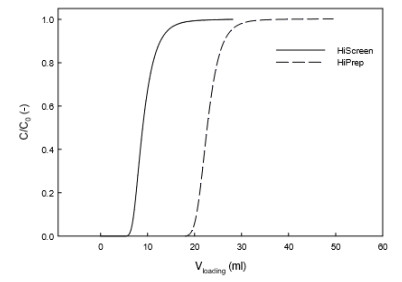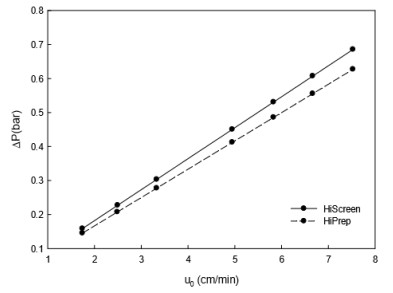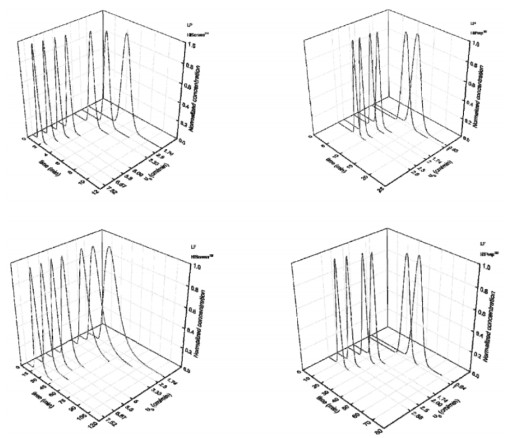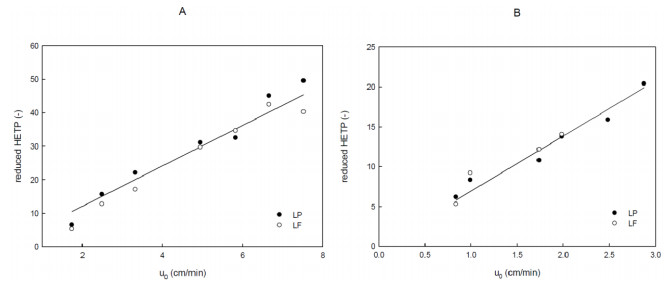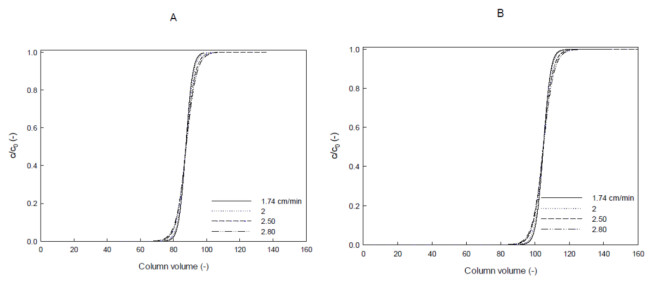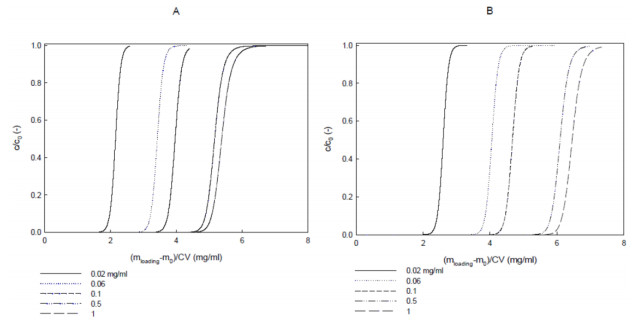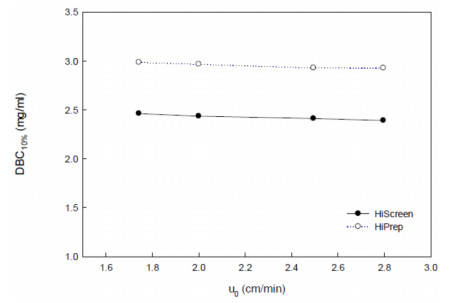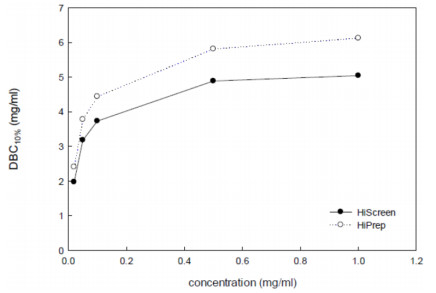|
[1]
|
Cheung AK, Sarnak MJ, Yan G, et al. (2004) Cardiac diseases in maintenance hemodialysis patients: results of the HEMO Study. Kidney Int 65: 2380-2389. doi: 10.1111/j.1523-1755.2004.00657.x

|
|
[2]
|
Foley RN, Parfrey PS, Harnett JD, et al. (1995) Clinical and echocardiographic disease in patients starting end-stage renal disease therapy. Kidney Int 47: 186-192. doi: 10.1038/ki.1995.22

|
|
[3]
|
ANZDATA Registry. 38th Report, Chapter 3: Mortality in End Stage Kidney Disease. Australia and New Zealand Dialysis and Transplant Registry, Adelaide, Australia. 2016.
|
|
[4]
|
Foley RN, Parfrey PS, Sarnak MJ (1998) Clinical epidemiology of cardiovascular disease in chronic renal disease. Am J Kidney Dis 32: S112-119. doi: 10.1053/ajkd.1998.v32.pm9820470

|
|
[5]
|
Longenecker JC, Coresh J, Powe NR, et al. (2002) Traditional cardiovascular disease risk factors in dialysis patients compared with the general population: the CHOICE Study. J Am Soc Nephrol 13: 1918-1927. doi: 10.1097/01.ASN.0000019641.41496.1E

|
|
[6]
|
Ruilope LM, van Veldhuisen DJ, Ritz E, et al. (2001) Renal function: the Cinderella of cardiovascular risk profile. J Am Coll Cardiol 38: 1782-1787. doi: 10.1016/S0735-1097(01)01627-8

|
|
[7]
|
Agarwal R (2005) Hypertension in chronic kidney disease and dialysis: pathophysiology and management. Cardiol Clin 23: 237-248. doi: 10.1016/j.ccl.2005.03.003

|
|
[8]
|
Neumann J, Ligtenberg G, Klein II, et al. (2004) Sympathetic hyperactivity in chronic kidney disease: pathogenesis, clinical relevance, and treatment. Kidney Int 65: 1568-1576. doi: 10.1111/j.1523-1755.2004.00552.x

|
|
[9]
|
Covic A, Kothawala P, Bernal M, et al. (2009) Systematic review of the evidence underlying the association between mineral metabolism disturbances and risk of all-cause mortality, cardiovascular mortality and cardiovascular events in chronic kidney disease. Nephrol Dial Transplant 24: 1506-1523. doi: 10.1093/ndt/gfn613

|
|
[10]
|
Kaysen GA, Eiserich JP (2004) The role of oxidative stress-altered lipoprotein structure and function and microinflammation on cardiovascular risk in patients with minor renal dysfunction. J Am Soc Nephrol 15: 538-548. doi: 10.1097/01.ASN.0000111744.00916.E6

|
|
[11]
|
Wang AY, Lam CW, Chan IH, et al. (2010) Sudden cardiac death in end-stage renal disease patients: a 5-year prospective analysis. Hypertension 56: 210-216. doi: 10.1161/HYPERTENSIONAHA.110.151167

|
|
[12]
|
Martinez-Rumayor A, Richards AM, Burnett JC, et al. (2008) Biology of the natriuretic peptides. Am J Cardiol 101: 3-8.
|
|
[13]
|
Mukoyama M, Nakao K, Hosoda K, et al. (1991) Brain natriuretic peptide as a novel cardiac hormone in humans. Evidence for an exquisite dual natriuretic peptide system, atrial natriuretic peptide and brain natriuretic peptide. J Clin Invest 87: 1402-1412.
|
|
[14]
|
Yasue H, Yoshimura M, Sumida H, et al. (1994) Localization and mechanism of secretion of B-type natriuretic peptide in comparison with those of A-type natriuretic peptide in normal subjects and patients with heart failure. Circulation 90: 195-203. doi: 10.1161/01.CIR.90.1.195

|
|
[15]
|
Gerbes AL, Dagnino L, Nguyen T, et al. (1994) Transcription of brain natriuretic peptide and atrial natriuretic peptide genes in human tissues. J Clin Endocrinol Metab 78: 1307-1311.
|
|
[16]
|
Kinnunen P, Vuolteenaho O, Ruskoaho H (1993) Mechanisms of atrial and brain natriuretic peptide release from rat ventricular myocardium: effect of stretching. Endocrinology 132: 1961-1970.
|
|
[17]
|
Bruneau BG, Piazza LA, de Bold AJ (1997) BNP gene expression is specifically modulated by stretch and ET-1 in a new model of isolated rat atria. Am J Physiol 273: H2678-2686.
|
|
[18]
|
Liang F, Gardner DG (1999) Mechanical strain activates BNP gene transcription through a p38/NF-kappaB-dependent mechanism. J Clin Invest 104: 1603-1612. doi: 10.1172/JCI7362

|
|
[19]
|
Bibbins-Domingo K, Ansari M, Schiller NB, et al. (2003) B-type natriuretic peptide and ischemia in patients with stable coronary disease: data from the Heart and Soul study. Circulation 108: 2987-2992. doi: 10.1161/01.CIR.0000103681.04726.9C

|
|
[20]
|
de Bold AJ (2009) Cardiac natriuretic peptides gene expression and secretion in inflammation. J Investig Med 57: 29-32. doi: 10.2310/JIM.0b013e3181948b37

|
|
[21]
|
Bruneau BG, Piazza LA, de Bold AJ (1996) Alpha 1-adrenergic stimulation of isolated rat atria results in discoordinate increases in natriuretic peptide secretion and gene expression and enhances Egr-1 and c-Myc expression. Endocrinology 137: 137-143.
|
|
[22]
|
Wiese S, Breyer T, Dragu A, et al. (2000) Gene expression of brain natriuretic peptide in isolated atrial and ventricular human myocardium: influence of angiotensin II and diastolic fiber length. Circulation 102: 3074-3079. doi: 10.1161/01.CIR.102.25.3074

|
|
[23]
|
Maisel AS, Krishnaswamy P, Nowak RM, et al. (2002) Rapid measurement of B-type natriuretic peptide in the emergency diagnosis of heart failure. N Engl J Med 347: 161-167. doi: 10.1056/NEJMoa020233

|
|
[24]
|
McCullough PA, Nowak RM, McCord J, et al. (2002) B-type natriuretic peptide and clinical judgment in emergency diagnosis of heart failure: analysis from Breathing Not Properly (BNP) Multinational Study. Circulation 106: 416-422. doi: 10.1161/01.CIR.0000025242.79963.4C

|
|
[25]
|
Doust JA, Pietrzak E, Dobson A, et al. (2005) How well does B-type natriuretic peptide predict death and cardiac events in patients with heart failure: systematic review. Bmj 330: 625. doi: 10.1136/bmj.330.7492.625

|
|
[26]
|
Troughton RW, Frampton CM, Yandle TG, et al. (2000) Treatment of heart failure guided by plasma aminoterminal brain natriuretic peptide (N-BNP) concentrations. Lancet 355: 1126-1130. doi: 10.1016/S0140-6736(00)02060-2

|
|
[27]
|
Pfisterer M, Buser P, Rickli H, et al. (2009) BNP-guided vs symptom-guided heart failure therapy: the Trial of Intensified vs Standard Medical Therapy in Elderly Patients With Congestive Heart Failure (TIME-CHF) randomized trial. Jama 301: 383-392. doi: 10.1001/jama.2009.2

|
|
[28]
|
Berger R, Moertl D, Peter S, et al. (2010) N-terminal pro-B-type natriuretic peptide-guided, intensive patient management in addition to multidisciplinary care in chronic heart failure a 3-arm, prospective, randomized pilot study. J Am Coll Cardiol 55: 645-653. doi: 10.1016/j.jacc.2009.08.078

|
|
[29]
|
Eurlings LW, van Pol PE, Kok WE, et al. (2010) Management of chronic heart failure guided by individual N-terminal pro-B-type natriuretic peptide targets: results of the PRIMA (Can PRo-brain-natriuretic peptide guided therapy of chronic heart failure IMprove heart fAilure morbidity and mortality?) study. J Am Coll Cardiol 56: 2090-2100. doi: 10.1016/j.jacc.2010.07.030

|
|
[30]
|
Persson H, Erntell H, Eriksson B, et al. (2010) Improved pharmacological therapy of chronic heart failure in primary care: a randomized Study of NT-proBNP Guided Management of Heart Failure--SIGNAL-HF (Swedish Intervention study—Guidelines and NT-proBNP AnaLysis in Heart Failure). Eur J Heart Fail 12: 1300-1308. doi: 10.1093/eurjhf/hfq169

|
|
[31]
|
Lainchbury JG, Troughton RW, Strangman KM, et al. (2009) N-terminal pro-B-type natriuretic peptide-guided treatment for chronic heart failure: results from the BATTLESCARRED (NT-proBNP-Assisted Treatment To Lessen Serial Cardiac Readmissions and Death) trial. J Am Coll Cardiol 55: 53-60. doi: 10.1016/j.jacc.2009.02.095

|
|
[32]
|
Shah MR, Califf RM, Nohria A, et al. (2011) The STARBRITE trial: a randomized, pilot study of B-type natriuretic peptide-guided therapy in patients with advanced heart failure. J Card Fail 17: 613-621. doi: 10.1016/j.cardfail.2011.04.012

|
|
[33]
|
Karlstrom P, Alehagen U, Boman K, et al. (2011) Brain natriuretic peptide-guided treatment does not improve morbidity and mortality in extensively treated patients with chronic heart failure: responders to treatment have a significantly better outcome. Eur J Heart Fail 13: 1096-1103. doi: 10.1093/eurjhf/hfr078

|
|
[34]
|
Januzzi JL, Jr., Rehman SU, Mohammed AA, et al. (2011) Use of amino-terminal pro-B-type natriuretic peptide to guide outpatient therapy of patients with chronic left ventricular systolic dysfunction. J Am Coll Cardiol 58: 1881-1889. doi: 10.1016/j.jacc.2011.03.072

|
|
[35]
|
Jourdain P, Jondeau G, Funck F, et al. (2007) Plasma brain natriuretic peptide-guided therapy to improve outcome in heart failure: the STARS-BNP Multicenter Study. J Am Coll Cardiol 49: 1733-1739. doi: 10.1016/j.jacc.2006.10.081

|
|
[36]
|
Anguita M, Esteban F, Castillo JC, et al. (2010) [Usefulness of brain natriuretic peptide levels, as compared with usual clinical control, for the treatment monitoring of patients with heart failure]. Med Clin (Barc) 135: 435-440. doi: 10.1016/j.medcli.2009.11.048

|
|
[37]
|
Troughton RW, Frampton CM, Brunner-La Rocca HP, et al. (2014) Effect of B-type natriuretic peptide-guided treatment of chronic heart failure on total mortality and hospitalization: an individual patient meta-analysis. Eur Heart J 35: 1559-1567. doi: 10.1093/eurheartj/ehu090

|
|
[38]
|
Mant J, Al-Mohammad A, Swain S, et al. (2011) Management of chronic heart failure in adults: synopsis of the National Institute For Health and clinical excellence guideline. Ann Intern Med 155: 252-259. doi: 10.7326/0003-4819-155-4-201108160-00009

|
|
[39]
|
van Kimmenade RR, Januzzi JL, Jr., Bakker JA, et al. (2009) Renal clearance of B-type natriuretic peptide and amino terminal pro-B-type natriuretic peptide a mechanistic study in hypertensive subjects. J Am Coll Cardiol 53: 884-890. doi: 10.1016/j.jacc.2008.11.032

|
|
[40]
|
Tsai SH, Lin YY, Chu SJ, et al. (2010) Interpretation and use of natriuretic peptides in non-congestive heart failure settings. Yonsei Med J 51: 151-163. doi: 10.3349/ymj.2010.51.2.151

|
|
[41]
|
Januzzi JL, van Kimmenade R, Lainchbury J, et al. (2006) NT-proBNP testing for diagnosis and short-term prognosis in acute destabilized heart failure: an international pooled analysis of 1256 patients: the International Collaborative of NT-proBNP Study. Eur Heart J 27: 330-337.
|
|
[42]
|
Gutierrez OM, Tamez H, Bhan I, et al. (2008) N-terminal pro-B-type natriuretic peptide (NT-proBNP) concentrations in hemodialysis patients: prognostic value of baseline and follow-up measurements. Clin Chem 54: 1339-1348. doi: 10.1373/clinchem.2007.101691

|
|
[43]
|
Wang AY, Lam CW, Yu CM, et al. (2007) N-terminal pro-brain natriuretic peptide: an independent risk predictor of cardiovascular congestion, mortality, and adverse cardiovascular outcomes in chronic peritoneal dialysis patients. J Am Soc Nephrol 18: 321-330. doi: 10.1681/ASN.2005121299

|
|
[44]
|
Satyan S, Light RP, Agarwal R (2007) Relationships of N-terminal pro-B-natriuretic peptide and cardiac troponin T to left ventricular mass and function and mortality in asymptomatic hemodialysis patients. Am J Kidney Dis 50: 1009-1019. doi: 10.1053/j.ajkd.2007.08.017

|
|
[45]
|
Paniagua R, Amato D, Mujais S, et al. (2008) Predictive value of brain natriuretic peptides in patients on peritoneal dialysis: results from the ADEMEX trial. Clin J Am Soc Nephrol 3: 407-415. doi: 10.2215/CJN.03820907

|
|
[46]
|
David S, Kumpers P, Seidler V, et al. (2008) Diagnostic value of N-terminal pro-B-type natriuretic peptide (NT-proBNP) for left ventricular dysfunction in patients with chronic kidney disease stage 5 on haemodialysis. Nephrol Dial Transplant 23: 1370-1377.
|
|
[47]
|
Parfrey PS (2000) Cardiac disease in dialysis patients: diagnosis, burden of disease, prognosis, risk factors and management. Nephrol Dial Transplant 15 Suppl 5: 58-68.
|
|
[48]
|
Fahim MA, Hayen A, Horvath AR, et al. (2015) N-terminal pro-B-type natriuretic peptide variability in stable dialysis patients. Clin J Am Soc Nephrol 10: 620-629. doi: 10.2215/CJN.09060914

|
|
[49]
|
Lippi G, Tessitore N, Luca Salvagno G, et al. (2007) Influence of haemodialysis on the NT-proBNP plasma concentration. Clin Chem Lab Med 45: 1414-1415.
|
|
[50]
|
Wahl HG, Graf S, Renz H, et al. (2004) Elimination of the cardiac natriuretic peptides B-type natriuretic peptide (BNP) and N-terminal proBNP by hemodialysis. Clin Chem 50: 1071-1074. doi: 10.1373/clinchem.2003.030692

|
|
[51]
|
Clerico A, Caprioli R, Del Ry S, et al. (2001) Clinical relevance of cardiac natriuretic peptides measured by means of competitive and non-competitive immunoassay methods in patients with renal failure on chronic hemodialysis. J Endocrinol Invest 24: 24-30. doi: 10.1007/BF03343804

|
|
[52]
|
Racek J, Kralova H, Trefil L, et al. (2006) Brain natriuretic peptide and N-terminal proBNP in chronic haemodialysis patients. Nephron Clin Pract 103: c162-172. doi: 10.1159/000092914

|
|
[53]
|
Dautin G, Boudjeltia S, Soltani Z, et al. (2007) The changes in NT-proBNP plasma concentrations during dialysis are highly dependent of the dialysis membrane ultrafiltration coefficient. Clin Chim Acta 376: 237-239. doi: 10.1016/j.cca.2006.08.004

|
|
[54]
|
Bargnoux AS, Klouche K, Fareh J, et al. (2008) Prohormone brain natriuretic peptide (proBNP), BNP and N-terminal-proBNP circulating levels in chronic hemodialysis patients. Correlation with ventricular function, fluid removal and effect of hemodiafiltration. Clin Chem Lab Med 46: 1019-1024.
|
|
[55]
|
Sheen V, Bhalla V, Tulua-Tata A, et al. (2007) The use of B-type natriuretic peptide to assess volume status in patients with end-stage renal disease. Am Heart J 153: 244.e241-245.
|
|
[56]
|
Flemmer M, Rajab H, Mathena T, et al. (2008) Blood B-type natriuretic peptide and dialysis: present assessment and future analyses. South Med J 101: 1094-1100. doi: 10.1097/SMJ.0b013e318189aa56

|
|
[57]
|
Chiarelli G, Beaulieu M, Taylor P, et al. (2011) Elimination of BNP by peritoneal dialysis: investigation of analytical issues. Perit Dial Int 31: 199-202.
|
|
[58]
|
Obineche EN, Pathan JY, Fisher S, et al. (2006) Natriuretic peptide and adrenomedullin levels in chronic renal failure and effects of peritoneal dialysis. Kidney Int 69: 152-156. doi: 10.1038/sj.ki.5000009

|
|
[59]
|
Granja CA, Tailor PT, Gorban-Brennan N, et al. (2007) Brain natriuretic peptide and impedance cardiography to assess volume status in peritoneal dialysis patients. Adv Perit Dial 23: 155-160.
|
|
[60]
|
Lee JA, Kim DH, Yoo SJ, et al. (2006) Association between serum n-terminal pro-brain natriuretic peptide concentration and left ventricular dysfunction and extracellular water in continuous ambulatory peritoneal dialysis patients. Perit Dial Int 26: 360-365.
|
|
[61]
|
Booth J, Pinney J, Davenport A (2010) N-terminal proBNP--marker of cardiac dysfunction, fluid overload, or malnutrition in hemodialysis patients? Clin J Am Soc Nephrol 5: 1036-1040. doi: 10.2215/CJN.09001209

|
|
[62]
|
Gangji AS, Helal BA, Churchill DN, et al. (2008) Association between N-terminal propeptide B-type natriuretic peptide and markers of hypervolemia. Perit Dial Int 28: 308-311.
|
|
[63]
|
Jacobs LH, van de Kerkhof JJ, Mingels AM, et al. (2010) Inflammation, overhydration and cardiac biomarkers in haemodialysis patients: a longitudinal study. Nephrol Dial Transplant 25: 243-248. doi: 10.1093/ndt/gfp417

|
|
[64]
|
Lee SW, Song JH, Kim GA, et al. (2003) Plasma brain natriuretic peptide concentration on assessment of hydration status in hemodialysis patient. Am J Kidney Dis 41: 1257-1266. doi: 10.1016/S0272-6386(03)00358-5

|
|
[65]
|
Fagugli RM, Palumbo B, Ricciardi D, et al. (2003) Association between brain natriuretic peptide and extracellular water in hemodialysis patients. Nephron Clin Pract 95: c60-66.
|
|
[66]
|
Sommerer C, Beimler J, Schwenger V, et al. (2007) Cardiac biomarkers and survival in haemodialysis patients. Eur J Clin Invest 37: 350-356. doi: 10.1111/j.1365-2362.2007.01785.x

|
|
[67]
|
Bavbek N, Akay H, Altay M, et al. (2007) Serum BNP concentration and left ventricular mass in CAPD and automated peritoneal dialysis patients. Perit Dial Int 27: 663-668.
|
|
[68]
|
Zoccali C, Mallamaci F, Benedetto FA, et al. (2001) Cardiac natriuretic peptides are related to left ventricular mass and function and predict mortality in dialysis patients. J Am Soc Nephrol 12: 1508-1515.
|
|
[69]
|
Foley RN, Curtis BM, Randell EW, et al. (2010) Left ventricular hypertrophy in new hemodialysis patients without symptomatic cardiac disease. Clin J Am Soc Nephrol 5: 805-813. doi: 10.2215/CJN.07761109

|
|
[70]
|
Mallamaci F, Zoccali C, Tripepi G, et al. (2001) Diagnostic potential of cardiac natriuretic peptides in dialysis patients. Kidney Int 59: 1559-1566. doi: 10.1046/j.1523-1755.2001.0590041559.x

|
|
[71]
|
Choi SY, Lee JE, Jang EH, et al. (2008) Association between changes in N-terminal pro-brain natriuretic peptide levels and changes in left ventricular mass index in stable hemodialysis patients. Nephron Clin Pract 110: c93-100. doi: 10.1159/000157622

|
|
[72]
|
Takase H, Dohi Y, Toriyama T, et al. (2011) B-type natriuretic peptide levels and cardiovascular risk in patients with diastolic dysfunction on chronic haemodialysis: cross-sectional and observational studies. Nephrol Dial Transplant 26: 683-690. doi: 10.1093/ndt/gfq408

|
|
[73]
|
Goto T, Takase H, Toriyama T, et al. (2002) Increased circulating levels of natriuretic peptides predict future cardiac event in patients with chronic hemodialysis. Nephron 92: 610-615. doi: 10.1159/000064100

|
|
[74]
|
Tripepi G, Mattace-Raso F, Mallamaci F, et al. (2009) Biomarkers of left atrial volume: a longitudinal study in patients with end stage renal disease. Hypertension 54: 818-824. doi: 10.1161/HYPERTENSIONAHA.109.136804

|
|
[75]
|
Wang AY, Wang M, Lam CW, et al. (2011) Heart failure in long-term peritoneal dialysis patients: a 4-year prospective analysis. Clin J Am Soc Nephrol 6: 805-812. doi: 10.2215/CJN.07130810

|
|
[76]
|
Winkler K, Wanner C, Drechsler C, et al. (2008) Change in N-terminal-pro-B-type-natriuretic-peptide and the risk of sudden death, stroke, myocardial infarction, and all-cause mortality in diabetic dialysis patients. Eur Heart J 29: 2092-2099. doi: 10.1093/eurheartj/ehn278

|
|
[77]
|
Breidthardt T, Kalbermatter S, Socrates T, et al. (2011) Increasing B-type natriuretic peptide levels predict mortality in unselected haemodialysis patients. Eur J Heart Fail 13: 860-867. doi: 10.1093/eurjhf/hfr057

|
|
[78]
|
Doust J (2010) Qualification versus validation of biomarkers. Scand J Clin Lab Invest Suppl 242: 40-43.
|
|
[79]
|
Katus HA, Remppis A, Scheffold T, et al. (1991) Intracellular compartmentation of cardiac troponin T and its release kinetics in patients with reperfused and nonreperfused myocardial infarction. Am J Cardiol 67: 1360-1367. doi: 10.1016/0002-9149(91)90466-X

|
|
[80]
|
Turer AT, Addo TA, Martin JL, et al. (2011) Myocardial ischemia induced by rapid atrial pacing causes troponin T release detectable by a highly sensitive assay: insights from a coronary sinus sampling study. J Am Coll Cardiol 57: 2398-2405. doi: 10.1016/j.jacc.2010.11.066

|
|
[81]
|
Hessel MH, Atsma DE, van der Valk EJ, et al. (2008) Release of cardiac troponin I from viable cardiomyocytes is mediated by integrin stimulation. Pflugers Arch 455: 979-986. doi: 10.1007/s00424-007-0354-8

|
|
[82]
|
Thygesen K, Alpert JS, Jaffe AS, et al. (2012) Third universal definition of myocardial infarction. Circulation 126: 2020-2035. doi: 10.1161/CIR.0b013e31826e1058

|
|
[83]
|
Keddis MT, El-Zoghby ZM, El Ters M, et al. (2013) Cardiac troponin T before and after kidney transplantation: determinants and implications for posttransplant survival. Am J Transplant 13: 406-414. doi: 10.1111/j.1600-6143.2012.04317.x

|
|
[84]
|
Wu AH, Feng YJ, Roper L, et al. (1997) Cardiac troponins T and I before and after renal transplantation. Clin Chem 43: 411-412.
|
|
[85]
|
Fredericks S, Chang R, Gregson H, et al. (2001) Circulating cardiac troponin-T in patients before and after renal transplantation. Clin Chim Acta 310: 199-203. doi: 10.1016/S0009-8981(01)00547-2

|
|
[86]
|
Bozbas H, Korkmaz ME, Atar I, et al. (2004) Serum levels of cardiac enzymes before and after renal transplantation. Clin Cardiol 27: 559-562. doi: 10.1002/clc.4960271007

|
|
[87]
|
Ellis K, Dreisbach AW, Lertora JL (2001) Plasma elimination of cardiac troponin I in end-stage renal disease. South Med J 94: 993-996. doi: 10.1097/00007611-200194100-00011

|
|
[88]
|
Fahie-Wilson MN, Carmichael DJ, Delaney MP, et al. (2006) Cardiac troponin T circulates in the free, intact form in patients with kidney failure. Clin Chem 52: 414-420. doi: 10.1373/clinchem.2005.062307

|
|
[89]
|
Jacobs LH, van de Kerkhof J, Mingels AM, et al. (2009) Haemodialysis patients longitudinally assessed by highly sensitive cardiac troponin T and commercial cardiac troponin T and cardiac troponin I assays. Ann Clin Biochem 46: 283-290. doi: 10.1258/acb.2009.008197

|
|
[90]
|
Kumar N, Michelis MF, DeVita MV, et al. (2011) Troponin I levels in asymptomatic patients on haemodialysis using a high-sensitivity assay. Nephrol Dial Transplant 26: 665-670. doi: 10.1093/ndt/gfq442

|
|
[91]
|
Wolley M, Stewart R, Curry E, et al. (2013) Variation in and prognostic importance of troponin T measured using a high-sensitivity assay in clinically stable haemodialysis patients. Clin Kidney J 6: 402-409. doi: 10.1093/ckj/sfs122

|
|
[92]
|
Hill SA, Cleve R, Carlisle E, et al. (2009) Intra-individual variability in troponin T concentration in dialysis patients. Clin Biochem 42: 991-995. doi: 10.1016/j.clinbiochem.2009.03.027

|
|
[93]
|
Pianta TJ, Horvath AR, Ellis VM, et al. (2012) Cardiac high-sensitivity troponin T measurement: a layer of complexity in managing haemodialysis patients. Nephrology (Carlton) 17: 636-641. doi: 10.1111/j.1440-1797.2012.01625.x

|
|
[94]
|
Katus HA, Haller C, Muller-Bardorff M, et al. (1995) Cardiac troponin T in end-stage renal disease patients undergoing chronic maintenance hemodialysis. Clin Chem 41: 1201-1203.
|
|
[95]
|
Collinson PO, Stubbs PJ, Rosalki SB (1995) Cardiac troponin T in renal disease. Clin Chem 41: 1671-1673.
|
|
[96]
|
Li D, Jialal I, Keffer J (1996) Greater frequency of increased cardiac troponin T than increased cardiac troponin I in patients with chronic renal failure. Clin Chem 42: 114-115.
|
|
[97]
|
Hickman PE, McGill D, Potter JM, et al. (2015) Multiple biomarkers including cardiac troponins T and I measured by high-sensitivity assays, as predictors of long-term mortality in patients with chronic renal failure who underwent dialysis. Am J Cardiol 115: 1601-1606. doi: 10.1016/j.amjcard.2015.02.066

|
|
[98]
|
Lippi G, Tessitore N, Montagnana M, et al. (2008) Influence of sampling time and ultrafiltration coefficient of the dialysis membrane on cardiac troponin I and T. Arch Pathol Lab Med 132: 72-76.
|
|
[99]
|
Gaze DC, Collinson PO (2014) Cardiac troponin I but not cardiac troponin T adheres to polysulfone dialyser membranes in an in vitro haemodialysis model: explanation for lower serum cTnI concentrations following dialysis. Open Heart 1: e000108. doi: 10.1136/openhrt-2014-000108

|
|
[100]
|
Nunes JP, Sampaio S, Cerqueira A, et al. (2015) Anti-troponin I antibodies in renal transplant patients. Rev Port Cardiol 34: 85-89.
|
|
[101]
|
Sacchetti A, Harris R, Patel K, et al. (1991) Emergency department presentation of renal dialysis patients: indications for EMS transport directly to dialysis centers. J Emerg Med 9: 141-144. doi: 10.1016/0736-4679(91)90320-F

|
|
[102]
|
McDonald SP, Tong B (2011) Morbidity burden of end-stage kidney disease in Australia: hospital separation rates among people receiving kidney replacement therapy. Nephrology (Carlton) 16: 758-766. doi: 10.1111/j.1440-1797.2011.01486.x

|
|
[103]
|
Herzog CA, Littrell K, Arko C, et al. (2007) Clinical characteristics of dialysis patients with acute myocardial infarction in the United States: a collaborative project of the United States Renal Data System and the National Registry of Myocardial Infarction. Circulation 116: 1465-1472. doi: 10.1161/CIRCULATIONAHA.107.696765

|
|
[104]
|
Sosnov J, Lessard D, Goldberg RJ, et al. (2006) Differential symptoms of acute myocardial infarction in patients with kidney disease: a community-wide perspective. Am J Kidney Dis 47: 378-384. doi: 10.1053/j.ajkd.2005.11.017

|
|
[105]
|
Jaffe AS, Apple FS (2012) The third Universal Definition of Myocardial Infarction--moving forward. Clin Chem 58: 1727-1728. doi: 10.1373/clinchem.2012.196832

|
|
[106]
|
Wu AH, Jaffe AS, Apple FS, et al. (2007) National Academy of Clinical Biochemistry laboratory medicine practice guidelines: use of cardiac troponin and B-type natriuretic peptide or N-terminal proB-type natriuretic peptide for etiologies other than acute coronary syndromes and heart failure. Clin Chem 53: 2086-2096. doi: 10.1373/clinchem.2007.095679

|
|
[107]
|
Fahim MA, Hayen AD, Horvath AR, et al. (2015) Biological variation of high sensitivity cardiac troponin-T in stable dialysis patients: implications for clinical practice. Clin Chem Lab Med 53: 715-722.
|
|
[108]
|
Michos ED, Wilson LM, Yeh HC, et al. (2014) Prognostic value of cardiac troponin in patients with chronic kidney disease without suspected acute coronary syndrome: a systematic review and meta-analysis. Ann Intern Med 161: 491-501. doi: 10.7326/M14-0743

|
|
[109]
|
(2005) K/DOQI clinical practice guidelines for cardiovascular disease in dialysis patients. Am J Kidney Dis 45: S1-153.
|
|
[110]
|
Yancy CW, Jessup M, Bozkurt B, et al. (2013) 2013 ACCF/AHA guideline for the management of heart failure: a report of the American College of Cardiology Foundation/American Heart Association Task Force on Practice Guidelines. J Am Coll Cardiol 62: e147-239. doi: 10.1016/j.jacc.2013.05.019

|
|
[111]
|
Mueller T, Leitner I, Egger M, et al. (2015) Association of the biomarkers soluble ST2, galectin-3 and growth-differentiation factor-15 with heart failure and other non-cardiac diseases. Clin Chim Acta 445: 155-160. doi: 10.1016/j.cca.2015.03.033

|
|
[112]
|
Mueller T, Dieplinger B (2013) The Presage((R)) ST2 Assay: analytical considerations and clinical applications for a high-sensitivity assay for measurement of soluble ST2. Expert Rev Mol Diagn 13: 13-30. doi: 10.1586/erm.12.128

|
|
[113]
|
Lippi G, Cervellin G (2014) Risk assessment of post-infarction heart failure. Systematic review on the role of emerging biomarkers. Crit Rev Clin Lab Sci 51: 13-29.
|
|
[114]
|
Weinberg EO, Shimpo M, De Keulenaer GW, et al. (2002) Expression and regulation of ST2, an interleukin-1 receptor family member, in cardiomyocytes and myocardial infarction. Circulation 106: 2961-2966. doi: 10.1161/01.CIR.0000038705.69871.D9

|
|
[115]
|
Demyanets S, Speidl WS, Tentzeris I, et al. (2014) Soluble ST2 and interleukin-33 levels in coronary artery disease: relation to disease activity and adverse outcome. PLoS One 9: e95055. doi: 10.1371/journal.pone.0095055

|
|
[116]
|
Dieplinger B, Egger M, Haltmayer M, et al. (2014) Increased soluble ST2 predicts long-term mortality in patients with stable coronary artery disease: results from the Ludwigshafen risk and cardiovascular health study. Clin Chem 60: 530-540. doi: 10.1373/clinchem.2013.209858

|
|
[117]
|
Bayes-Genis A, de Antonio M, Galan A, et al. (2012) Combined use of high-sensitivity ST2 and NTproBNP to improve the prediction of death in heart failure. Eur J Heart Fail 14: 32-38. doi: 10.1093/eurjhf/hfr156

|
|
[118]
|
Lippi G, Salvagno GL, Robuschi F, et al. (2014) Influence of dipyridamole stress echocardiography on galectin-3, amino-terminal B-type natriuretic peptide (NT-proBNP) and high-sensitivity troponin T. Acta Cardiol 69: 377-383.
|
|
[119]
|
Krzeslak A, Lipinska A (2004) Galectin-3 as a multifunctional protein. Cell Mol Biol Lett 9: 305-328.
|
|
[120]
|
Sharma UC, Pokharel S, van Brakel TJ, et al. (2004) Galectin-3 marks activated macrophages in failure-prone hypertrophied hearts and contributes to cardiac dysfunction. Circulation 110: 3121-3128. doi: 10.1161/01.CIR.0000147181.65298.4D

|
|
[121]
|
Suarez G, Meyerrose G (2014) Heart failure and galectin 3. Ann Transl Med 2: 86.
|
|
[122]
|
Chen A, Hou W, Zhang Y, et al. (2015) Prognostic value of serum galectin-3 in patients with heart failure: a meta-analysis. Int J Cardiol 182: 168-170. doi: 10.1016/j.ijcard.2014.12.137

|
|
[123]
|
Winter MP, Wiesbauer F, Alimohammadi A, et al. (2016) Soluble galectin-3 is associated with premature myocardial infarction. Eur J Clin Invest 46: 386-391. doi: 10.1111/eci.12605

|
|
[124]
|
Yancy CW, Jessup M, Bozkurt B, et al. (2013) 2013 ACCF/AHA guideline for the management of heart failure: a report of the American College of Cardiology Foundation/American Heart Association Task Force on practice guidelines. Circulation 128: e240-327. doi: 10.1161/CIR.0b013e31829e8776

|
|
[125]
|
Hogas S, Schiller A, Voroneanu L, et al. (2016) Predictive Value for Galectin 3 and Cardiotrophin 1 in Hemodialysis Patients. Angiology 67: 854-859. doi: 10.1177/0003319715623397

|
|
[126]
|
Gurel OM, Yilmaz H, Celik TH, et al. (2015) Galectin-3 as a new biomarker of diastolic dysfunction in hemodialysis patients. Herz 40: 788-794. doi: 10.1007/s00059-015-4303-6

|
|
[127]
|
de Boer RA, van der Velde AR, Mueller C, et al. (2014) Galectin-3: a modifiable risk factor in heart failure. Cardiovasc Drugs Ther 28: 237-246. doi: 10.1007/s10557-014-6520-2

|
|
[128]
|
Hagstrom E, James SK, Bertilsson M, et al. (2016) Growth differentiation factor-15 level predicts major bleeding and cardiovascular events in patients with acute coronary syndromes: results from the PLATO study. Eur Heart J 37: 1325-1333. doi: 10.1093/eurheartj/ehv491

|
|
[129]
|
Jougasaki M, Rodeheffer RJ, Redfield MM, et al. (1996) Cardiac secretion of adrenomedullin in human heart failure. J Clin Invest 97: 2370-2376. doi: 10.1172/JCI118680

|
|
[130]
|
Nishikimi T, Saito Y, Kitamura K, et al. (1995) Increased plasma levels of adrenomedullin in patients with heart failure. J Am Coll Cardiol 26: 1424-1431. doi: 10.1016/0735-1097(95)00338-X

|
|
[131]
|
Maisel A, Mueller C, Nowak R, et al. (2010) Mid-region pro-hormone markers for diagnosis and prognosis in acute dyspnea: results from the BACH (Biomarkers in Acute Heart Failure) trial. J Am Coll Cardiol 55: 2062-2076. doi: 10.1016/j.jacc.2010.02.025

|
|
[132]
|
Giannopoulos G, Deftereos S, Panagopoulou V, et al. (2013) Copeptin as a biomarker in cardiac disease. Curr Top Med Chem 13: 231-240. doi: 10.2174/15680266113139990088

|
|
[133]
|
Reid P, Holen I (2009) Pathophysiological roles of osteoprotegerin (OPG). Eur J Cell Biol 88: 1-17.
|
|
[134]
|
Nybo M, Rasmussen LM (2008) The capability of plasma osteoprotegerin as a predictor of cardiovascular disease: a systematic literature review. Eur J Endocrinol 159: 603-608. doi: 10.1530/EJE-08-0554

|
|
[135]
|
Rosenberg M, Zugck C, Nelles M, et al. (2008) Osteopontin, a new prognostic biomarker in patients with chronic heart failure. Circ Heart Fail 1: 43-49. doi: 10.1161/CIRCHEARTFAILURE.107.746172

|
|
[136]
|
Rabin KR, Kamari Y, Avni I, et al. (2005) Adiponectin: linking the metabolic syndrome to its cardiovascular consequences. Expert Rev Cardiovasc Ther 3: 465-471. doi: 10.1586/14779072.3.3.465

|
|
[137]
|
Zoccali C, Mallamaci F, Panuccio V, et al. (2003) Adiponectin is markedly increased in patients with nephrotic syndrome and is related to metabolic risk factors. Kidney Int Suppl: S98-102.
|
|
[138]
|
Zoccali C, Mallamaci F, Tripepi G, et al. (2002) Adiponectin, metabolic risk factors, and cardiovascular events among patients with end-stage renal disease. J Am Soc Nephrol 13: 134-141.
|
|
[139]
|
Yan AT, Yan RT, Spinale FG, et al. (2006) Plasma matrix metalloproteinase-9 level is correlated with left ventricular volumes and ejection fraction in patients with heart failure. J Card Fail 12: 514-519. doi: 10.1016/j.cardfail.2006.05.012

|
|
[140]
|
Kecebas M, Gullulu S, Sag S, et al. (2014) Serum fetuin-A levels in patients with systolic heart failure. Acta Cardiol 69: 399-405.
|
|
[141]
|
Morrow DA, Cannon CP, Rifai N, et al. (2001) Ability of minor elevations of troponins I and T to predict benefit from an early invasive strategy in patients with unstable angina and non-ST elevation myocardial infarction: results from a randomized trial. Jama 286: 2405-2412. doi: 10.1001/jama.286.19.2405

|
|
[142]
|
Sandoval Y, Herzog CA, Love SA, et al. (2016) Prognostic Value of Serial Changes in High-Sensitivity Cardiac Troponin I and T over 3 Months Using Reference Change Values in Hemodialysis Patients. Clin Chem 62: 631-638. doi: 10.1373/clinchem.2015.251835

|









 DownLoad:
DownLoad: 